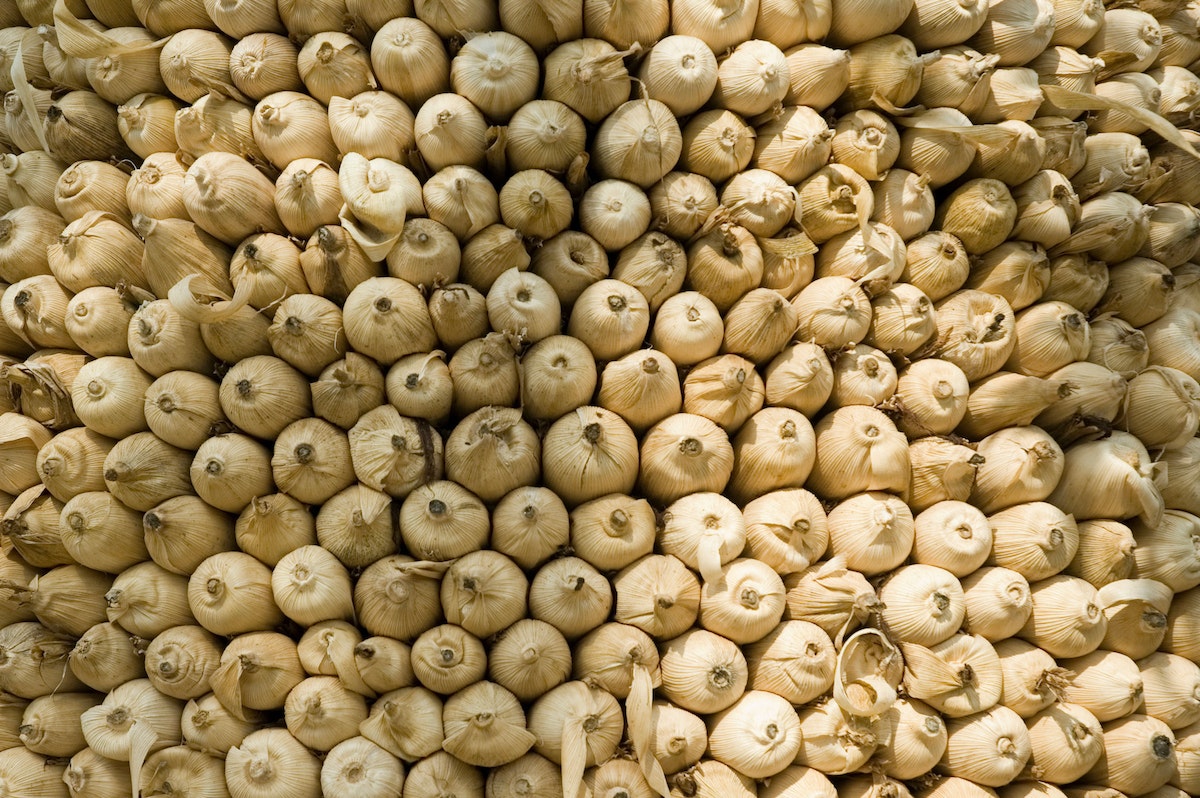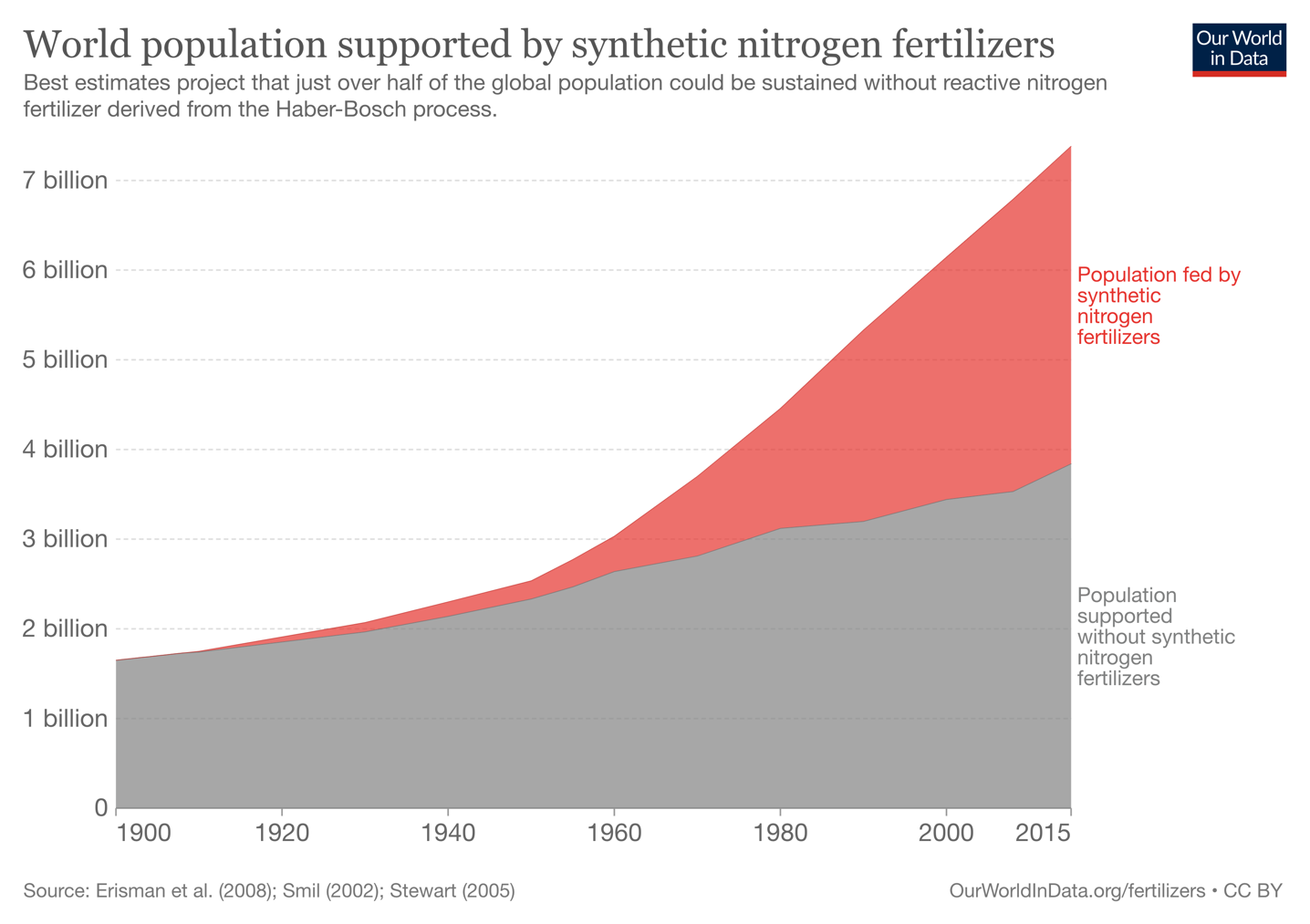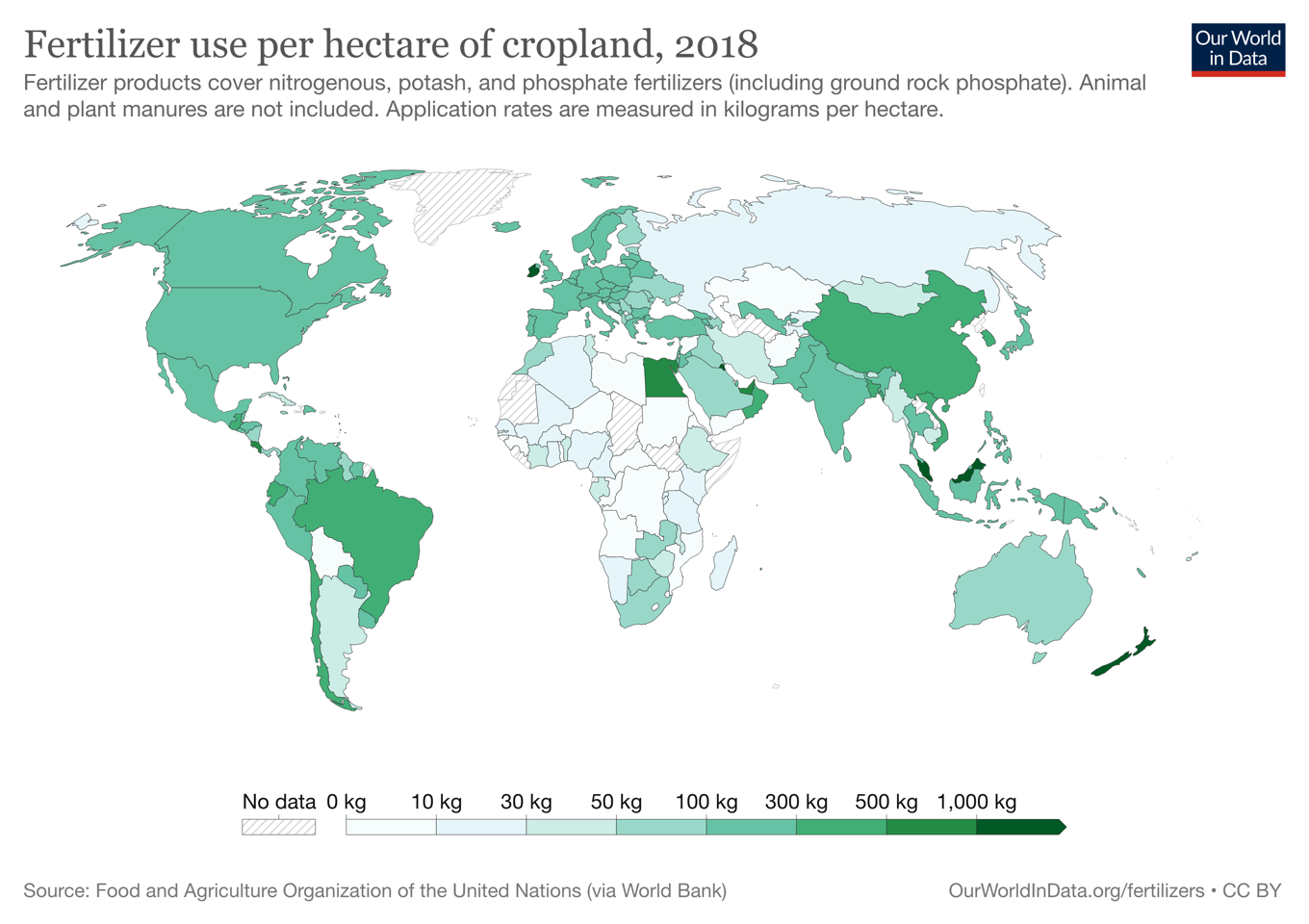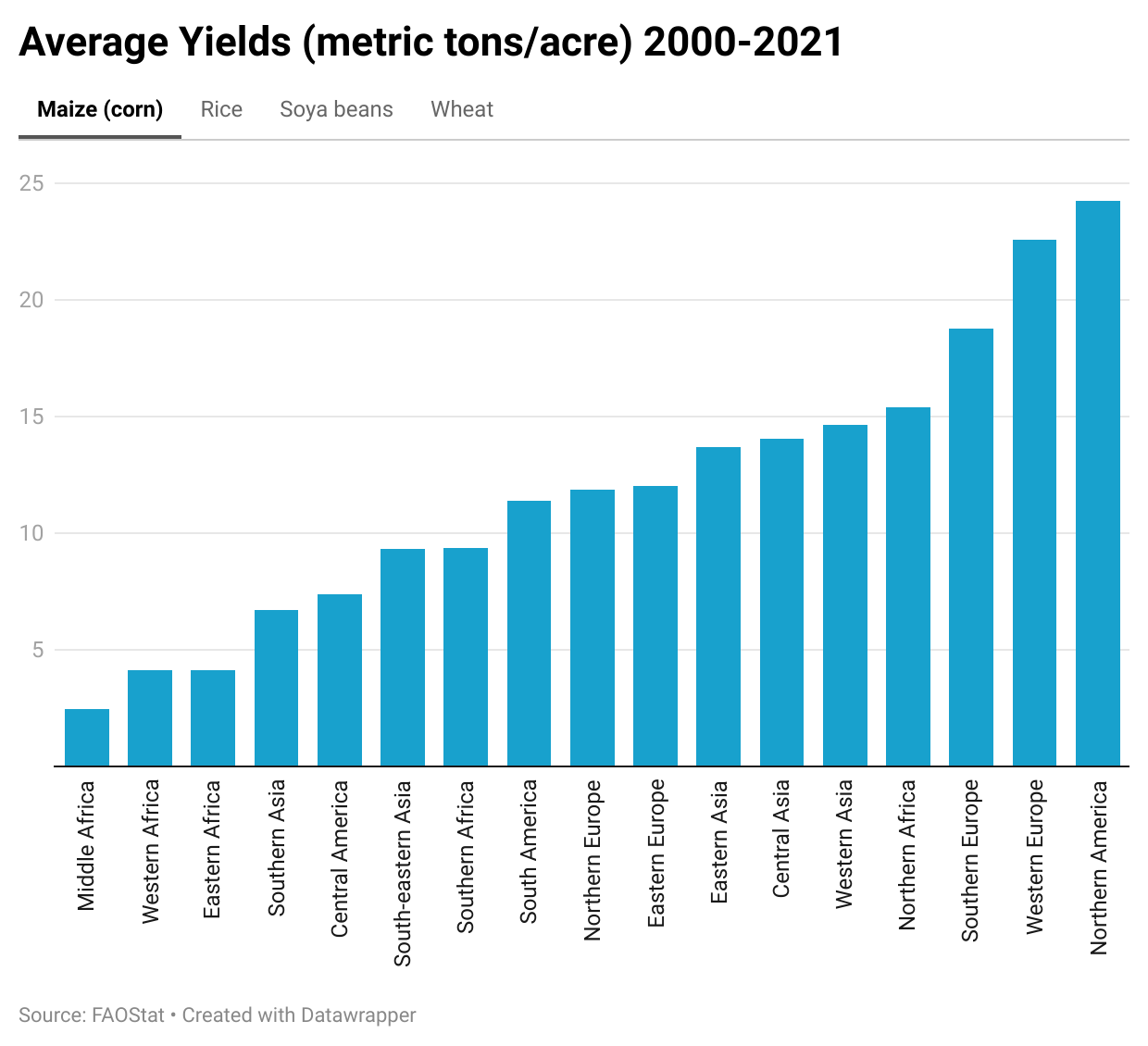African Farmers Need Access to Synthetic Fertilizer Now
The world won't meet rising demand for food without increasing agricultural productivity

-
-
Share
-
Share via Twitter -
Share via Facebook -
Share via Email
-
If you were to listen to some Western commentators on agriculture, you would think that the worst thing that farmers could do is increase their use of fertilizer. Synthetic fertilizer, after all, is a fossil fuel product. Nutrient run-off is a grave threat to fisheries, waterways, and more. Above all, commentators emphasize, synthetic fertilizers put agriculture out of harmony with the “natural” soils that have long nourished the families of subsistence farmers and smallholders who sell their cereals and produce in urban and suburban markets.
But synthetic fertilizer has significant upsides, too. Despite short-term ecological challenges, and dependence on fossil fuels for its production, the benefits of increased synthetic fertilizer use—higher farm yields, reduced dependency on imports, improved food security, and lowered pressure on forested and other wild landscapes—outweigh the costs. Synthetic fertilizer also has counterintuitive climate and land use benefits.
Africa’s agricultural yields lag the rest of the world, leaving it dependent on costly imports. Between 2016 and 2018, as much as 85 percent of Africa’s food was imported. Prior to the Russian invasion of Ukraine, about a third of Africa’s wheat came from either Russia or Ukraine. Some countries, like Congo and Tanzania, relied on Ukraine and Russia for more than 70 percent of their wheat supply. Higher price levels after the invasion have meant that consumers and governments are paying significantly more for food. High food prices are an enormous burden for individuals, families, and communities who already experience high levels of poverty and food insecurity. Nigeria’s inflation rate so far in 2022 is at 20.8 percent, Ethiopia’s is 30.2 percent, and Sudan’s sits at a whopping 148.8 percent.
A recent United Nations World Food Program report highlighted 19 “hunger hotspots” in 2022, of which 16 were in Africa. Topping this dismal list was the Democratic Republic of Congo, which has seen a 25 percent increase in its food insecure population (bringing the total to almost 26 million people). Ethiopia and Nigeria follow, with around 20 million food insecure people each. In the 16 “hunger hotspots” alone—not even considering food insecure populations elsewhere in Africa—about 114 million people face shortages, high prices, and hunger. There are more people in Africa facing food insecurity than the entire population of Russia.
In 2020, Nigeria imported just under 1 million metric tons of Russian wheat. In the same year, Nigerian producers harvested about 55,000 metric tons of wheat from approximately 50,000 hectares of cropland, for an average yield of just about 1.1 tons of wheat per hectare. While it would be nearly impossible for Nigeria to raise its average wheat yields by enough to completely replace Russian wheat imports, simply matching Russian average yields of just under 3 tons per hectare could offset more than 10 percent of imported Russian wheat without expanding cropland. Although 10 percent might sound small, an additional one million tons of Nigerian-grown wheat would go far to reduce the cost of food in Nigeria, alleviate short-term food insecurity from food supply shocks, and generate much-needed revenue for agricultural communities.
Fertilizer prices are high in Africa, burdening farmers who already struggle to pay for nutrient inputs. Increases in fertilizer production capacity in Ethiopia, Ghana, and Nigeria may relieve some of the stress of high import costs but small gains in the short term are not enough. Prior to the Russian invasion of Ukraine, countries such as Côte d’Ivoire, Ghana, and Mauritania purchased between 20 and 50 percent of their fertilizer from Russia. They must now compete with other nations to purchase agricultural nutrients in a diminished market with inflated prices.
To address food insecurity while limiting cropland expansion, African governments must increase fertilizer production capacity and drive greater adoption of fertilizer by lowering costs for farmers.
Using synthetic fertilizer has high returns
The nineteenth century was marked by periodic soil fertility crises. Industrialization in Europe put greater pressure on rural farmlands to feed growing urban centers, while removing key nutrients—namely, human waste—from the landscape. Phosphate rocks, seabird guano, and other nutrient dense products were added to farmlands, but demand led to skyrocketing prices and intermittent food supply disruptions. Although never reaching a breaking point of complete loss of soil fertility, the cyclical fertility patterns worried agriculturalists, soil scientists, and social theorists. In some cases even, it drove nations to military conflict over the agricultural nutrient trade.
It wasn’t until Fritz Haber demonstrated his novel process for synthesizing ammonia in 1909, and Carl Bosch industrialized that process a few years later, that things changed.
In 1913, when the Haber-Bosch process was first implemented at an industrial scale, the world population was around 1.8 billion. Today, the world population is just over 8 billion. Few technological innovations have had as significant a contribution to feeding a growing population than the Haber-Bosch process, which increased the use of synthetic fertilizer across the world. In fact, without synthetic nitrogen fertilizer, we would not be able to feed over 8 billion people.

As of 2015, around 3 billion people around the world are sustained by food that is produced with synthetic fertilizer.
Synthetic fertilizer, combined with other technologies and policies, has had major returns on agricultural productivity. In 1913, the average yield for an acre of corn grown in the United States was 22.7 bushels. Just 50 years later, the average acre planted with corn in the United States produced about 67.9 bushels of corn, a more-than three-fold increase. In 2013, American corn yields were on average 158.1 bushels per acre, just under 7 times as much corn per acre as a century earlier.
Despite the clear benefits of synthetic fertilizers, their adoption has been geographically uneven. Richer farmers in Europe and North America could afford to adopt synthetic fertilizer relatively quickly following the industrialization of the Haber-Bosch process, but smallholder farmers throughout the world have historically been constrained by their lack of capital to purchase and use these inputs.
Today, the use of synthetic fertilizer remains unevenly distributed. Outside of Egypt, African countries are among the lowest users of synthetic fertilizer in the world. The United States, for example, used an average of about 129 kg of fertilizer per hectare of cropland in 2018, Brazil used over 300 kg, China used just under 400, and Ukraine used about 65. By comparison, Zambia used 52 kg of fertilizer per hectare of cropland, while Malawi used 36, Ghana about 30, and Nigeria just under 20. Multiple African countries—Angola, Congo, Democratic Republic of Congo, and Niger, to name a few—used less than 10.


Uneven use of synthetic fertilizer is one of the key factors that drives differences in agricultural productivity. Crop and livestock yield in countries that utilize energy-intensive agricultural inputs are significantly higher than in countries that use fewer of these inputs. The yield gap between rich countries and poor countries reinforces country-level inequality, exacerbates food insecurity, and increases import dependence.

Average corn yields in Ghana, Malawi, Nigeria, and Zambia between 2016 and 2020 are all less than half of Brazil’s national yield averages over the same period, and around a fifth of yields in the United States. While soybean yields are closer to even—soybeans and other legumes are less reliant on added nitrogen due to the crop’s capacity to fix nitrogen from the atmosphere—even Africa’s most productive soybean producer, Ghana, has yields at about half that of Brazil and the United States.
Efforts to increase the use of fertilizer have paid off but a lack of funds has made it difficult for governments to subsidize fertilizer for a sustained period of time. Malawi, for example, subsidized fertilizer purchases for their agricultural producers for almost a half-decade between 2005 and 2009. Yield responses were positive; one study found that farmers that received ISP vouchers increased their maize yields by about 42 percent on average. This program cost the Malawi agricultural ministry about $74 million over four years, equivalent to about 70 percent of the ministry budget and 16 percent of the total government budget.
The Nigerian government also subsidized the cost of fertilizer from 2001 to 2014, seeing overall increases in fertilizer usage and an uptick in overall yields. Although Nigeria employed far lower subsidization rates than Malawi—subsidies peaked from 2012 to 2014 at 50 percent of market price—one study found that yields increased by 38 percent between 2010 and 2013 alone. As in the case of Malawi, Nigeria’s subsidies represented a substantial portion of the governments’ overall spending on agriculture. In 2008, Nigeria spent 24.1 percent of its agricultural budget on fertilizer subsidies, in 2009 that number declined to 16 percent, only to rebound to 26 percent in 2010.
Similar programs in Zambia, Ghana, and Tanzania increased crop yields but were limited in total outreach. Zambian farmers who took advantage of fertilizer subsidies saw an 18 percent increase in yields by 2013. A decade-long effort to provide subsidized fertilizer in Ghana, according to one study, saw cereal yields increase by 24.5 percent. In Tanzania, the reported results were far more significant, with farmers who received vouchers increasing their yields by as much as 103 percent in areas with high rainfall, and by 89.5 percent in areas with less rainfall.
Use of fertilizer has a positive correlation with yields, but it isn’t the only thing that matters. Real productivity gains associated with fertilizer are also dependent on other technological and practical improvements. For example, to improve productivity, better irrigation systems are also necessary. Currently, about 95 percent of African agriculture is rain0fed, rather than irrigated. While some crops, including cereals like corn and wheat, are less water-intensive and do not require irrigation in rainier regions, many vegetables, fruits, nuts, and other high-value crops, need irrigation to maximize yields.
Mechanization also plays an important role in increasing productivity. While tractors and other mechanized equipment are ubiquitous in rich countries, African farmers continue to rely on manual and animal labor. From 2010 to 2012, only 4 percent of Nigerian farm households utilized tractors during the rainy seasons. From 1992 to 2012, the percentage of Kenyan farmers who used tractors declined from 5 percent to 2 percent, while use of animals, like oxen, increased from 17 percent to 32 percent. While animal labor can be productivity enhancing, especially on small farms, oxen are no match for tractors.
Synthetic fertilizer results in greenhouse gas emissions but has climate and land use benefits, too
Synthetic fertilizer is responsible for greenhouse gas emissions, local pollution, and more. Its production emits CO2 from the burning of natural gas or other fossil fuels for energy. Its application—or rather, over-application—produces nitrous oxide, a greenhouse gas about 300 times as potent as carbon dioxide. Excessive use of fertilizer—synthetic or not—results in runoff from agricultural fields into waterways, driving the growth of algal blooms. These turn waterways hypoxic, producing dead zones where fish, plants, and other water-based species cannot survive.
Opponents of synthetic fertilizer would call its use “extractive.” For example, organic and regenerative proponents like the Rodale Institute in the United States, the Soil Association in the United Kingdom, and others, argue that the use of synthetic fertilizer and other chemicals in agriculture threaten long-term soil fertility and put agricultural production out of harmony with nature.
Although there are real problems with synthetic fertilizers, the alternatives—organic fertilizers like manure or other animal-based products—do not mitigate problems with run-off and greenhouse gas emissions, or change the fact that agriculture disrupts “natural” landscapes. To make matters worse, these alternatives do not increase productivity in agriculture.
In places where fertilizer use remains low, increased use will likely result in short-term ecological issues and higher greenhouse gas emissions. This is especially true where farm plots remain small, and farm capitalization is low. In China, for example, competing policies to keep farm sizes small while increasing fertilizer use and thus productivity have led to chronic over-application due to the difficulty of knowledge transfer to small farms, and the inability of smaller operations to afford improved technologies that allow for less wasteful fertilizer practices. China’s intention behind keeping farm sizes small was to protect struggling rural communities, but this approach limits the capacity for technological adoption and environmentally sustainable productivity growth by restricting capital accumulation.
Problems of overuse and resulting local ecological harm can be fixed. In the long term, synthetic fertilizers are critical to achieving high productivity, low food prices, and lower levels of hunger. Governments will need to be conscientious of how increased productivity can lead to farm consolidation and reduced employment and may need to foster rural-urban migration. Despite tradeoffs, the benefits of synthetic fertilizer with respect to agricultural productivity and increased food security are too important to ignore.
In places where agricultural yields remain low, increased fertilizer usage can be a climate and land-use win in the long-term.
Low yielding agriculture requires more land to produce food than higher-productivity agriculture. Recent analysis from NASA found that the rate of agricultural land expansion in Africa has accelerated over the past few years, as growing populations require more food, and foreign investors target African countries as potential sites of export-oriented agricultural production. Cropland expansion is the primary cause of deforestation and habitat loss. Accordingly, it is a major threat to biodiversity. Cropland expansion also threatens to release the carbon stored in natural ecosystems into the atmosphere. For example, a 2018 study estimated that by 2050, cropland expansion could be responsible for up to 11.48 gigatons of carbon storage lost due to expanding agricultural production.
Attempts to replace portions of food imports with domestic African production at current levels of yield could result in drastic increases in the use of land for agriculture. For example, in the Democratic Republic of Congo, which relies on Russia for just under 60 percent of its total wheat supply, wheat is grown on approximately 8000 hectares. To replace the 200,000 tons of Russian wheat imported in 2020, the DRC would need to dedicate approximately 175,000 more hectares of cropland to wheat production—an over 20-fold increase in land used for wheat production.
While cropland expansion is not necessarily a bad thing for African agriculture—after all, hunger and food insecurity are the top concern for many governments—increased agricultural productivity can provide both food security and environmental protection, despite the tradeoff of more runoff.
To maximize the climate benefits from fertilizer use, producers will need the proper data and information to make targeted use of fertilizer inputs. Use of technological innovations—both information technologies that can provide clear and usable data, and mechanical tools that make that data actionable—can both reduce the total amount of fertilizer needed to maximize yields and protect the local environment from nutrient pollution.
Yet even in high-income countries, adoption of these technologies has been slow. Long-term cost-saving from reduced fertilizer use can offset the costs of adoption of precision agricultural equipment and techniques, but the economic realities of production often make these capital investments difficult to justify. In less developed economies, where farmers face greater risks and have less access to capital—either from government assistance programs or private financing—precision agriculture is not a short-term solution. In the mean-time, use of fertilizer —even inefficient use—will be necessary to reduce cropland expansion, limit GHG emissions, and improve access to abundant food.
How to lower the cost of fertilizer
Agricultural inputs are expensive. This is true everywhere, but especially true in Africa, where transportation costs—both overseas shipping and rail and trucking costs on the continent—drive up fertilizer prices. Farmers in Uganda, for example, pay about twice the price per bag of fertilizer than farmers in the United States while earning less than 5 percent of U.S. incomes. Within nations and regions, fertilizer price variations depend on distance traveled. Proximity to ports and fertilizer production drastically lowers prices compared to land-locked and rural regions.
The high cost of fertilizer, relative to available capital means that fertilizer purchases come with higher risks. Farmers in Africa own smaller plots of land and have less capital available to adopt new practices and inputs. Especially when farmers lack experience and tools necessary to use fertilizer most efficiently, utilizing a large portion of operating expenses for the possibility of uncertain yield improvement seems unappealing.
Local production of fertilizer will help. In Nigeria, the Dangote Group opened the world’s second-largest fertilizer production facility in early 2022. Similarly, the OCP Group, a Moroccan-state run firm, plans to construct several fertilizer production facilities in Africa. First on their list is an Ethiopian facility slated to open in 2023. Increasing production capacity in Africa will be crucial to reducing prices and making fertilizer available to more African farmers.
But a gradual increase in production capacity may not reduce prices enough. If demand for inputs continues to increase, production capacity will need to increase exponentially to maintain low prices.
There are many things governments can do to improve access to fertilizers, including maintaining a healthy macroeconomic environment and improving small farmers’ access to credit and providing carefully targeted subsidies. But the most important intervention might be to lower the cost of transportation of fertilizer from factory or port to the farm. Several studies point to the importance of supply corridors, including better functioning ports of entry and more transportation options to lower costs and improve access for farmers. As one report says, “the last mile of a fertilizer’s journey to the grower is often the most expensive and often the biggest barrier to its use.” The International Fund for Agricultural Development points out that transporting fertilizer from an African seaport to a farm 100 km inland can cost more than transporting the fertilizer from North America to Africa. A World Bank report says that reducing transport costs is likely to increase the profitability of fertilizer in Nigeria more than the provision of subsidies. Any efforts to increase production will need to be matched by a trade and transportation system capable of delivering fertilizer at a reasonable cost to farmers.
Increasing agricultural productivity in Africa and other parts of the world is central to meeting the rising demand for food. In Africa, raising productivity will require much greater use of synthetic fertilizer. While critiques of fertilizer usage are common amongst Western environmentalists, many national governments and international organizations have embraced the need for more and better agricultural inputs in Sub-Saharan Africa. Innovations to increase the returns to the use of fertilizer while also reducing harmful side effects will be critical to meeting the demand for food. Increasing the productivity of agriculture and making investments in the greening of fertilizer should be the focus of rich countries as well as development banks and other organizations that play a role in alleviating food insecurity and hunger in Africa.


